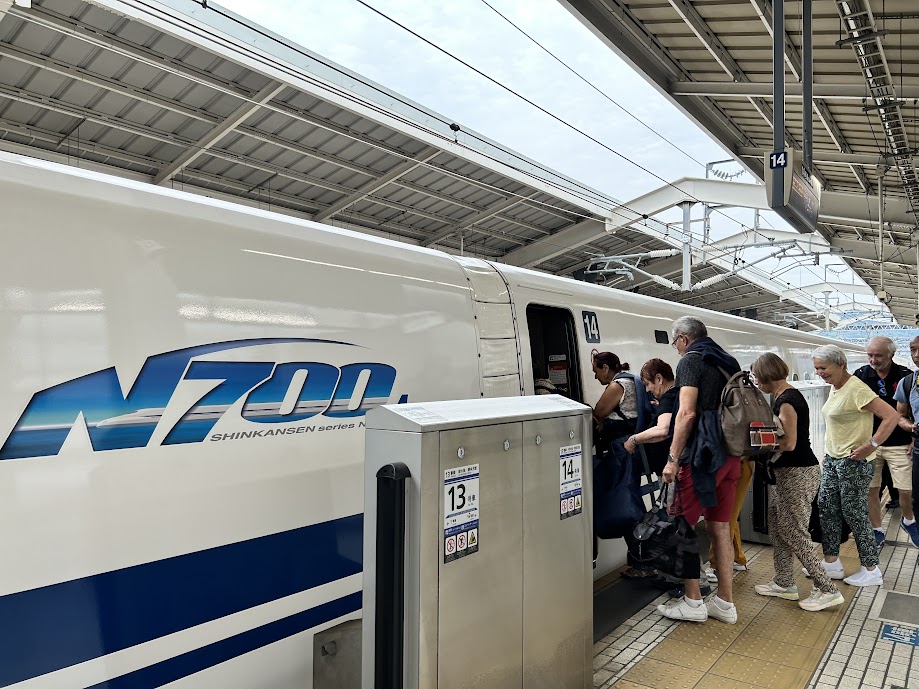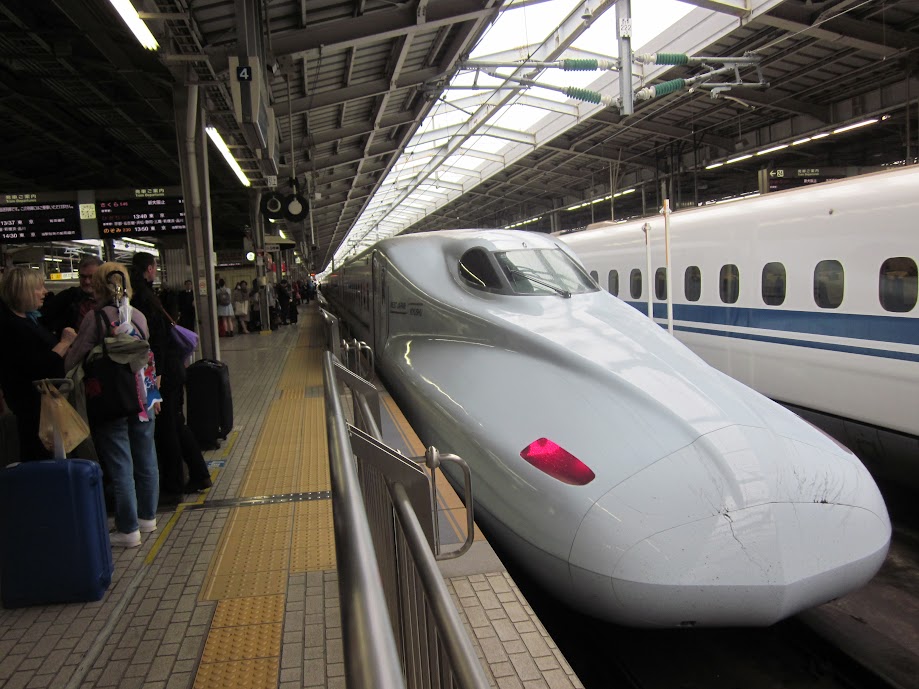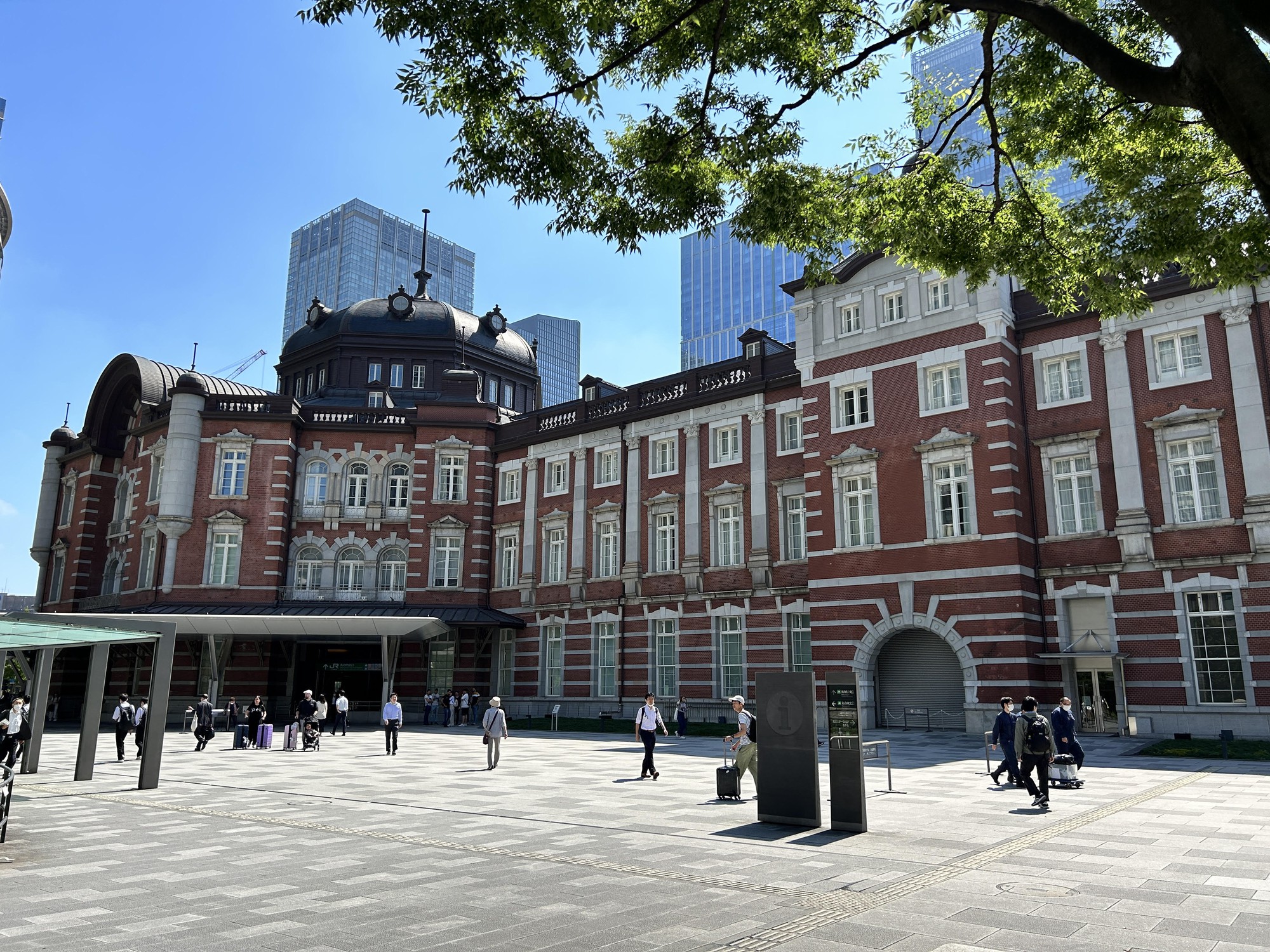During our trip last June, I wanted to buy a cheap Shinkansen ticket: the Kodama train. However, it was not successful.
The Tokaido Shinkansen line from Tokyo through Kyoto and beyond consists of three types of "Bullet Trains", including the Kodama. Although the slowest due to its many stops along the way, it still reaches Kyoto in under 3 hours and 30 minutes at a top speed of 285 km/h. It takes longer than other Shinkansen - around 2 hours and 12 minutes - but, if possible, it is worth taking. Especially for tourists who like to see a lot of scenery and those who prioritize price over speed.
However, despite the help of a young Japanese man I met at Tokyo Station, I was unable to purchase a cheap Kodama train ticket to Kyoto. It was so cheap that it was hard to get one! In the end, I had to buy a regular Shinkansen ticket to Kyoto; two tickets cost $284 (paid by credit card) for a distance of 475 km. Not cheap.

Foreign tourists often choose the Shinkansen train to travel around Japan.
Travel Revolution
The Shinkansen experience is always enjoyable thanks to the elegance, cleanliness and efficiency of the trains. However, this is not limited to the Shinkansen, the regular trains also have it.
After Kyoto, our next destination was Osaka, about 50 km from the old capital of Japan. We took a regular train, which cost about $6 and 40 minutes from Kyoto Station to Osaka Station. Shinkansen are famous for their incredible speed – except for the Kodama. Shinkansen usually run at a maximum speed of 320 km/h! For those short on time, the faster journey can make for a more enjoyable way to travel or sightsee.
Fast, but safe. Because safety is a top priority in Japan. The Shinkansen system has an impressive safety record. Research shows that this is due to advanced technology, meticulous planning, and rigorous maintenance.

A Shinkansen train waiting for passengers to leave the station
The Shinkansen is also famous for its efficiency, punctuality and accuracy. Thanks to that, we were able to plan our trip between Tokyo and Kyoto without much difficulty. No need to worry about the time at all.
The Tōkaidō Shinkansen is a testament to Japan's formidable transportation network. It connects Tokyo, Nagoya, Kyoto, and Osaka, and has played a vital role in both economic development and cultural exchange between these cities.
Extensive network
The Shinkansen network has expanded significantly since its inception. Now, according to Japanese railway records, new lines such as the Yamagata and Akita Shinkansen have brought high-speed travel to areas previously unreachable. In doing so, they have boosted economic development and tourism opportunities across the Japanese archipelago. The Shinkansen is a system that will continue to play a major role in Japan’s future success story.
We also enjoyed a luxurious train ride called the Kuro Matsu, from Kyoto to Tango. It traveled at a speed of less than 100 km/h, giving us the feeling of being transported back to a slower time. Another unforgettable experience.
After World War II, Japan faced major challenges in rebuilding its economy and infrastructure. Skilled engineers and government officials came up with an innovative solution: bullet trains connecting major cities. This idea and vision laid the foundation for the Shinkansen - one of Japan's most iconic and advanced transportation systems.

The ancient look of Tokyo station
On October 1, 1964, Japan wrote a new page in history with the Tōkaidō Shinkansen - the world's first high-speed train line, connecting first Tokyo with Osaka.
This achievement shows that Japan is a pioneer in technology, thereby shaping both travel and tourism around the world.
The particularly slender design of Shinkansen trains earned them the instant nickname "bullet trains"!
Source link
























![[Photo] National Assembly Chairman Tran Thanh Man visits Vietnamese Heroic Mother Ta Thi Tran](https://vphoto.vietnam.vn/thumb/1200x675/vietnam/resource/IMAGE/2025/7/20/765c0bd057dd44ad83ab89fe0255b783)












































































Comment (0)